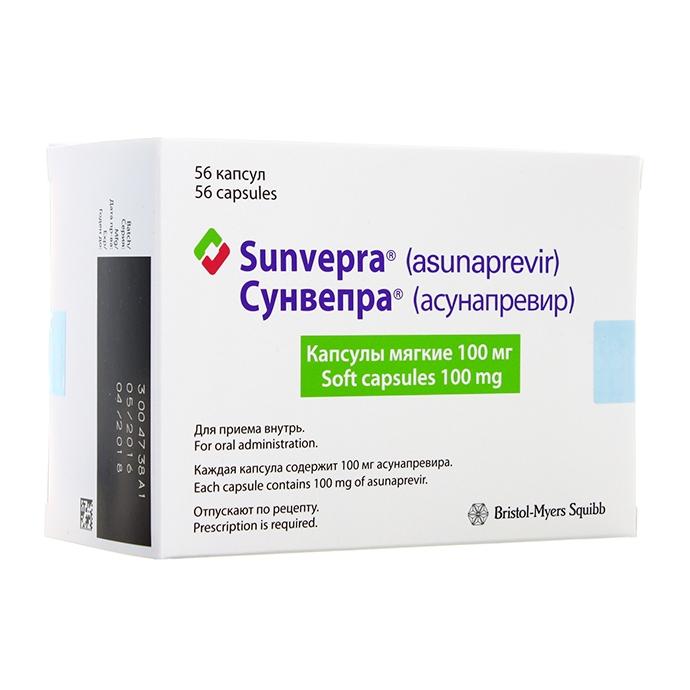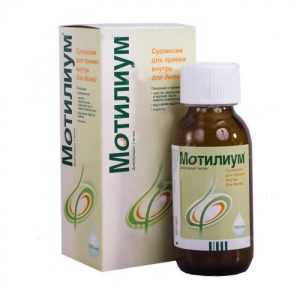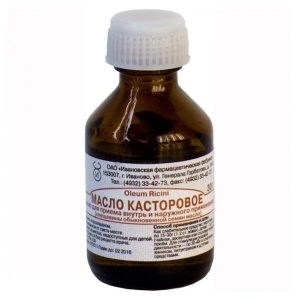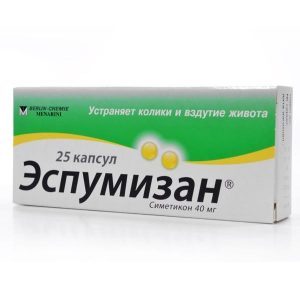Description
Release form
Soft gelatin capsules, from white to light yellow, oval, opaque, with black BMS marking on the first line and black marking 711 on the second line (under BMS) the contents of the capsules is a light yellow transparent solution.
packaging 14 pcs – blisters (4) – packs of cardboard.
Pharmacological action of
Antiviral drug active against hepatitis C virus
Indications
Treatment of chronic hepatitis C in patients with compensated liver disease (including cirrhosis) in the following combinations of asunaprevir:
– with daclatasvir for patients with hepatitis C virus of genotype 1b
– with daclatasvirone peergative drugs for patients hepatitis C genotype 1.
Contraindications
– the drug should not be used as monotherapy
– hypersensitivity to asunaprevir and / or any of the auxiliary components of the
drug – in patients with moderate grade and severe hepatic insufficiency (Child-Pugh class B and C, 7 or more points ) and decompensated liver disease
– concomitant use with drugs:
– clearance of which is highly dependent on the isoenzyme 2D6 (CYP2D6) of cytochrome P450 and in which elevated plasma concentrations are associated with serious and / or life-threatening phenomena (narrow therapeutic index): flecainide, propafenone, thioridazine
– which are significant or moderate isoenzyme 3A (CYP3A) is induced by cytochrome P450 and, thus, can lead to a decrease in concentration and loss of effectiveness of asunaprevir: phenytoin, carbamazepine, phenobarbital, rifampicin, rifabutin, rifapentin, nafcillin, bosentan, dexametaz N, preparations of Hypericum perforatum (Hypericum perforalum), efavirenz, etravirine, modafinil, nevirapine
– which to a large extent suppress or moderate CYP3A isoenzyme and thus can lead to increased concentrations and increased toxicity asunaprevira: ketoconazole, itraconazole, voriconazole, fluconazole, phosphluconazole, miconazole, clarithromycin, erythromycin, diltiazem, verapamil, atazanavir, indinavir, lopinavir, nelfinavir, ritonavir, saquinavir. darunavir, fosamprenavir
– which significantly suppress the transport polypeptides (OATP) of 1B1 or 2B1 organic anions and, thus, can lead to a decrease in liver concentration and loss of effectiveness of asunaprevir such as rifampicin, cyclosporine, sirolimus, gemfibrozil.
– if there are contraindications to the use of drugs of the combined regimen (daclatasvir and / or peginterferon alfa + ribavirin) – see instructions for the use of the respective drugs
– pregnancy and lactation period
– age under 18 (efficacy and safety have not been studied).
With caution
Since the drug is used as a combination regimen, combination therapy should be used with caution in the conditions described in the instructions for use of each drug that is part of the regimen (daclatasvir and / or peginterferon alfa and ribavirin).
The combined use of Sunvepra with other drugs can lead to a change in the concentration of both asunaprevir and the active substances of other drugs (see section Interaction with other drugs).
Pregnancy and lactation
There are no adequate and well-controlled studies in pregnant women. In animal studies using doses exceeding therapeutic (472 times in mice, 1.2 times in rabbits), the reproductive toxicity of the drug was not detected. The use of the combination daclatasvir + asunaprevir during pregnancy is contraindicated. During treatment with this combination, it is recommended to use adequate methods of contraception.
It is not known whether asunaprevir passes into breast milk. Asunaprevir passes into breast milk in animal studies, so if you need to use Sunvepra during lactation, you should stop breastfeeding.
Daclatasvir + Asunaprevir + Peginterferon alfa + Ribavirin
The use of ribavirin can cause fetal malformations, intrauterine death and abortion, so careful care should be taken when applying a treatment regimen involving ribavirin. It is necessary to prevent pregnancy both in the patients themselves and in women whose sexual partners receive the indicated therapy. Ribavirin therapy should not be started until patients capable of childbearing and their male sexual partners will not use at least 2 effective methods of contraception, which is necessary both throughout the treatment and for at least 6 months after its completion. During this period, routine pregnancy tests must be performed. When using oral contraceptives as one of the methods for preventing pregnancy, it is recommended to use high doses of oral contraceptives (containing at least 30 micrograms of ethinyl estradiol in combination with norethindrone acetate / norethindrone).
The study of interferons in animal experiments has been associated with abortive effects, the possibility of which in humans cannot be ruled out. Therefore, when applying therapy, both patients and their partners should use adequate contraception.
Composition
1 tab.
asunaprevir 100 mg
Excipients: medium chain triglycerides – 150 mg, glyceromonocaprilocaproate (type I) – 150 mg, polysorbate 80 – 99.5 mg, butylhydroxytoluene – 0.5 mg.
Shell composition: gelatin – 168 mg, sorbitol and sorbitan solution – 60.4 mg, glycerol – 50.4 mg, titanium dioxide – 2 mg, Opacode ® Monogramming Ink ink, black – qs (ethanol / ethyl acetate (SDA 35A alcohol) *, propylene glycol, iron oxide black, polyvinyl acetate phthalate, purified water, isopropyl alcohol, polyethylene glycol, ammonium hydroxide).
* is ethanol denatured with ethyl acetate.
Dosage and administration
Recommended dosage
The recommended dose of Sunvepra is 100 mg 2 times / day, regardless of food intake. The drug should be used in combination with other drugs (see Table 1), and already at the beginning of therapy, asunaprevir and daclatasvir are always used simultaneously. Recommendations for doses of other drugs of the scheme are given in the relevant instructions for medical use. Therapy is recommended both for patients who have not previously received treatment for chronic hepatitis C, and for patients with previous treatment failure.
Table 1. Recommended treatment regimens for the drug Sunvepra when used at a dose of 100 mg 2 times / day as part of the combination therapy
HCV genotype Treatment Duration
Genotype 1b daclatasvir + asunaprevir 24 weeks
Genotype 1 daclatcvir + asunaprevir and peerinterfin After starting therapy, changing the dose of asunaprevir and daclatasvir is not recommended. To change the dose of other medications, it is necessary to familiarize yourself with the relevant instructions for medical use. Interruption of treatment should be avoided, however, if if interruption of treatment with any drug of the regimen is necessary due to undesirable reactions that have occurred, Sunvepra should not be used as monotherapy.
During treatment, it is necessary to monitor the viral load (the amount of HCV PHK in the patient’s blood). Patients with an inadequate virological response during treatment with a low degree of probability will achieve a stable virologic response (SVR), and this group also has a chance of developing resistance. Discontinuation of treatment is recommended in patients with a virologic breakthrough – an increase in HCV RNA by more than 1 log10 from the previous level.
Skipping a dose of
If you miss the next dose of Sunvepra for up to 8 hours, the patient should take the drug as soon as possible and continue to adhere to the initial regimen. If more than 8 hours have passed since the dose was missed from the planned time for taking the drug, the patient should skip taking this dose, the next dose should be taken in accordance with the initial treatment regimen.
Patients with renal failure
Dose changes in patients with renal failure of any degree are not required.
Patients with hepatic insufficiency
Dose changes in patients with mild hepatic insufficiency (class A on the Child-Pugh scale) are not required. Therapy with patients with moderate to severe liver failure (Child-Pugh class B and C) and decompensated liver disease is contraindicated.
Side effects
Penapat Sunvepra is used only as part of combination therapy regimens. You should familiarize yourself with the side effects of drugs included in the treatment regimen before starting therapy. Undesirable drug reactions (NLR) associated with the use of daclatasvir, peginterferon alfa and ribavirin are described in the instructions for medical use of these drugs.
The safety of asunaprevir was evaluated in 5 clinical trials in patients with chronic hepatitis C who received 100 mg of Sunvepra 2 times / day in combination with daclatasvir and / or peginterferon alfa and ribavirin. Safety data are presented below for treatment regimens.
Daclatasvir + Asunaprevir
The safety of daclatasvir in combination with asunaprevir was evaluated in 4 studies with an average treatment duration of 24 weeks. The most common (incidence of 10% and higher) HLR observed in clinical trials using the Daclatasvir + Asunaprevir treatment regimen were headache (15%) and increased fatigue (12%). Most NLRs were mild and moderate in severity. Serious adverse events (SIA) were reported in 6% of patients, 3% of patients discontinued treatment due to the occurrence of NLR. Moreover, the most common adverse events (AEs) leading to discontinuation of treatment were an increase in ALT and ACT activity. In a clinical study of Daclatasvir + Asunaprevir therapy during the first 12 weeks of treatment, the frequency of reported NLR was similar between patients receiving placebo and patients receiving this therapy.
Adverse reactions that occurred in 5% of patients with chronic hepatitis C when using the combination of Daclatasvir + Asunaprevir are presented below. The incidence of NLR is given in accordance with the scale: very often ( 1/10), often ( 1/100 and
Table 2.
Adverse reactions
Nervous system disorders
Very often Headache (15%)
Gastrointestinal disorders
Frequently Diarrhea (9%), nausea (8%)
Common disorders
Very often Fatigue (12% srdlp Often, an increase in ALT (7%) and an increase in ACT (5%)
a are undesirable reactions, the association of which with the use of the drug is at least possible. Combined data from several studies.
Adverse reactions occurring in less than 5% of patients with chronic hepatitis C when using the combination of Daclatasvir + Asunaprevir: skin rash, skin itching, alopecia zosinophilia, thrombocytopenia, anemia, fever, malaise, chills insomnia, decreased appetite, discomfort pain in the upper abdomen, stomatitis, bloating, vomiting, increased blood pressure, joint pain, muscle stiffness, nasopharyngitis, oropharynx pain, increased activity of gamma globulin transferase, alkaline phosphatase, lipase, hypoalbuminemia.
Asunaprevir in combination with daclatasvir, peginterferon alfa and ribavirin
The safety of asunaprevir in combination with daclatasvir, peginterferon alfa and ribavirin was evaluated in a HALLMARK QUAD clinical trial with an average treatment duration of 24 weeks. The most common NLR (frequency 15% and higher) observed in clinical trials using the Daclatasvir + Asunaprevir + peginterferon alpha + ribavirin therapy regimen were: increased fatigue (39%), headache (28%), pruritus (25%), asthenia (23%), flu-like condition (22%), insomnia (21%), anemia (19%), rash (18%),
alopecia (16%), irritability (16%) and nausea (15%). Additional side effects that occurred in patients with chronic hepatitis C when using the treatment regimen Daclatasvir + Asunaprevir + Peginterferon alpha + Ribavirin were: dry skin (15%), decreased appetite (12%), muscle pain (14%), fever (15% ), cough (13%), shortness of breath (11%), neutropenia (14%), lymphopenia (1%), diarrhea (14%), joint pain (9%). Most NLRs were mild and moderate in severity. In 6% of patients CHY was reported. 5% of patients discontinued treatment due to AE, while the most common AE. cessation of treatment were rash, malaise, dizziness, and neutropenia.
In a clinical trial of therapy with daclatasvir + asunaprevir + peginterferon alfa + ribavirin, the frequency of reported adverse reactions was similar between patients. receiving placebo, and patients receiving this therapy, with the exception of 2 adverse reactions – asthenia and flu-like condition. These HLPs were the only ones that occurred with a frequency of at least 5% higher than among patients receiving placebo.
Laboratory test results
Pathological deviations of laboratory parameters from the norm of 3-4 degrees observed among patients with chronic hepatitis C who received combined treatment with Sunvepra are presented in the table.
Table 3. Pathological deviations of laboratory parameters from the norm of 3-4 degrees observed in clinical trials of
Parameter Asunaprevir in combination with daclatasvir n = 918Asunaprevir in combination with daclatasvir, peginterferon alfa, ribavirin n = 398
> Increased activity of AL. 1 VGNb) 4% 3%
Increased AST activity (> 5.1 VGN) 3% 3%
Increased total bilirubin concentration (> 2.6 VGN) 1% 1%
a – laboratory results were classified according to the DAIDS system for severity classification Adverse events in adults and children, version 1.0
b – upper limit of normal
If any of the conditions indicated in the NLR instructions are aggravated or you notice any other side effects not listed in the instructions, inform your doctor.
Drug Interaction
Because that the drug Sunvepr is used in the combination of treatment regimens, you should familiarize yourself with the possible interactions with each of the drugs regimens.
CYP3A isoenzyme is involved in the elimination of asunaprevir. Therefore, moderate and strong inducers of CYP3A isoenzyme may decrease plasma concentrations of asunaprevir, and moderate and strong CYP3A isoenzyme inhibitors may increase plasma concentrations of asunaprevir. Asunaprevir is also a substrate of transport P-glycoprotein (P-gp), but the co-administration of agents that only affect the properties of P-gp (without simultaneously affecting the CYP3A isoenzyme) is not sufficient to produce a clinically relevant effect on the plasma concentration of asunaprevir. OATR 1B1 and 2B1 participate in the distribution of asunaprevir in the liver, therefore, potent inhibitors of OATP-mediated transport may increase plasma concentrations of asunaprevir and may reduce the therapeutic effect.
Asunaprevir is a moderate CYP2D6 isoenzyme inhibitor, a weak inhibitor of OATP 1B1 / 1B3 / 2B1 mediated transport and P-gp, and a weak CYP3A isoenzyme inducer. Caution should be exercised when administering Sunwepra with substrates of these isoenzymes or transport mechanisms with careful clinical monitoring of both desired therapeutic effects and undesirable effects. Asunaprevir did not inhibit CYP1A2, CYP2C9, or CYP2C19 isoenzymes in vitro.
Drugs that are contraindicated in conjunction with asunaprevir are listed in Table 4 (see also Contraindications):
Table 4. Drugs, Application kotor h, together with the asunaprevyrom contraindicated
Mechanism vzaymodeystvyyaRezultat vzaymodeystvyyaLekarstvenn e sredstva.protyvopokazann e, together with the Application for asunaprevyrom CYP2D6 isoenzyme
Ynhybyrovnye asunaprevyromPov shenye CONTENT drug in plasma Could results for serdechn m arytmyyamAntyarytmycheskye sredstva
Flekaynyd, propafenone
Antypsyhotycheskoe funds
thioridazine
Sylnaya or moderate CYP3A isoenzyme induction from the co-administered drugM Jette causes for absence vyrusolohycheskoho response to asunaprevyrProtyvoÑpyleptycheskye sredstva
Fenytoyn, carbamazepine, phenobarbital
Antybakteryaln e sredstva
Ryfampytsynb, rifabutin, rifapentine, naftsyllyn
antagonist receptors endothelin
Bozentan
Systemic corticosteroids
Dexamethasone
Rastyteln e sredstva
Preparations zveroboya prod ryavlennoho (Hypericum perforatum)
Nenukleozydn e ynhybytor obratnoy transcriptase of HIV
favyrenz, Ñtravyryn, nevirapine
analeptic
Modafylyl
Significant or moderate inhibition of isoenzyme CYP3A co storony sovmestno prymenyaemoho medication, in some cases (eg ketoconazole, itraconazole, clarithromycin, erythromycin, diltiazem, lopinavir / ritonavir, faith amyl) at The combination with inhibition of P-gpPov shenye concentrations asunaprevyra Can pov syt probability and severity of reactions pobochn h co storony hepatobylyarnoy system Protyvohrybkov e sredstva
ketoconazole, itraconazole, voriconazole, fluconazole, fosflukonazol, mykonazol
Antybakteryaln e sredstva
clarithromycin, erythromycin
blockers kaltsyev h channels
diltiazem, verapamil
Ynhybytor proteazy HIV
Atazanavyr, yndynavyr, lopynavyr, nelfynavyr, rytonavyr, sakvynavyr, darunavyr, fosamprenavyr
Significant inhibition OATR 1B1 or 2V1Mozhet cause for absence vyrusolohycheskoho response to asunaprevyrAntybakteryaln e agents Rifampicin
Immunosuppressants
Cyclosporine, sirolimusHipolipidemic agentsHemfibrozil
b-rifampicin has as induce Inhibitory effects on CYP3A and OATP inhibitors 1B1 and 2B1
Table 5 below provides information on drug interactions of Sunvepr and clinical guidelines for established and potentially significant drug interactions. A clinically significant increase in concentration is shown as ^, a clinically significant decrease in concentration – as v and no clinically significant change – as -. srdlpp
srdl srp per week and ribavirin 500 mg or 600 mg 2 times / day asunaprevir
– peginterferon alfa
– ribavirin Dose adjustment for asunaprevir, peginterferon alpha or ribavirina not required
Sredstva, acid-suppressing
proton pump inhibitors
Omeprazole 40 mg single-omeprazole Dose adjustment for omeprazole or other CYP2C19 isoenzyme substrates is not required. The use of this combination has no effect on the kinetics of asunaprevir.
Antydepressant
Selektyvn e ynhybytor Back capture serotonin
stsytalopram 10 mg 1 time / sut- asunaprevyr
– ÑstsytalopramKorrektsyya doz drugs and Sunvepra Ñstsytalopram not required
Sertalyn 50 mg 1 time / sut- asunaprevyr
– sertalynKorrektsyya doz drugs and Sunvepra sertalyn not required antihypertensive
agents Losartan 25 mg single-losartan No dose adjustment of losartan or other CYP2C9 isoenzyme substrates required. When co-administered with angiotensin-2 receptor blockers and asunaprevir, no clinically significant change in the kinetics of asunaprevir is expected
Antitussive drugs
Dextromethorphan 30 mg single ^ dextromethorphan
CYP2D6 isoenzyme suppression by asstunavirPreparable clinical monitoring2 It is recommended to consider reducing the dose of sensitive CYP2D6 isoenzyme substrates.
Cardiovascular drugs
Antiarrhythmic agents
Digoxin 0.5 mg once ^ digoxin
Suppression of P-gp by asunaprevir Digoxin and other P-gp substrates with a narrow therapeutic range should be used with caution. The lowest dose of digoxin should be prescribed and the plasma concentration of digoxin monitored. Dose titration should be used to achieve the desired therapeutic effect.
Hormonal contraceptives
Ethinylestradiol 35 mcg 1 time / day + 0.180 / 0.215 / 0.250 mg 1 time / day for 7/7/7 daysv ethinylestradiol
v norelgestromine
Ethinylestradiol: isoenzyme induction of CYP.
Norelgestromine: unknown mechanism For patients using oral contraceptives, the use of high-dose oral preparations containing at least 30 μg of ethinylestradiol in combination with norethindrone acetate / norethindrone when co-administered with norethindrone is recommended. Concomitant administration has no clinically relevant effect on the pharmacokinetics of asunaprevir.
Ethinylestradiol 30 μg 1 time / day norethindrone acetate 1. 5 mg 1 time / day (high-dose contraceptive agent) 55 (asunaprevir 100 mg 2 times / day and daclatasvir 60 mg 1 time / day) – ethinylestradiol *
– norethindrone *
^ ethynylestradiol *
^ norethinderone * when combined with high doses of oral contraceptives with asunaprevir and daclatasvir compared with the pharmacokinetics of ethinylestradiol / norethindrone when using only low doses of oral contraceptives (ethinylestradiol 20 μg 1 time / day / norethind 1 mg 1 dose 1 nddl demycheskye sredstva
Ynhybytor HMG-CoA reductase (statyn )
rosuvastatin 10 mg rosuvastatin once ^
suppression OART 1V1 / 1V3 co storony asunaprevyraLechenye rosuvastatin and second substrates OATR 1V1 / 1V3 possible to Start in rekomendovann h doses for sovmestnom Application with the drug Sunvepr with careful monitoring of the side effects and therapeutic effects of rosuvastatin.
Methadone, stable supporting application 40-100 mg
– r-methadone to be used with caution in view of reducing the content of midazolam in the blood plasma and reducing its therapeutic effet. Similarly for other drugs of the group whose elimination depends on the CYP3A isoenzyme
stimulants Caffeine 200 mg single-caffeine No dose adjustment for caffeine or other substances metabolised by the CYP1A2 isoenzyme is required.
Overdose
Overdose symptoms have not been described.
In phase I clinical trials with nThe use of the drug in healthy volunteers at doses up to 300 mg of asunaprevir twice daily for up to 10 days did not result in unforeseen adverse reactions. In clinical studies, taking doses of asunaprevir in excess of the recommended dose was associated with an increase in liver enzyme activity. There is no antidote to Sunvepr. Treatment of drug overdose should include general supportive measures, including: monitoring of vital functions and observation of the patient’s clinical condition. Due to the high binding of asunaprevir to plasma proteins, dialysis is not recommended for overdose.
Storage conditions
The drug should be stored protected from light and out of the reach of children at a temperature not exceeding 25 ° C.
Do not use after the expiration date printed on the package.
Expiration
Expiration is 2 years.
Deystvuyuschee substances
Asunaprevyr
dosage form
dosage form
capsule
Catalent Farma Solns, United States




